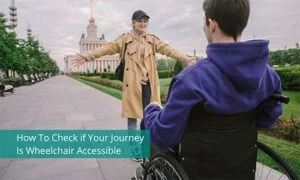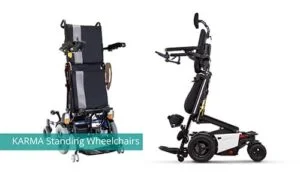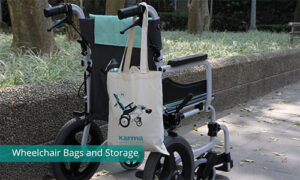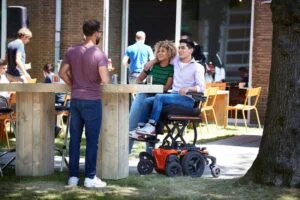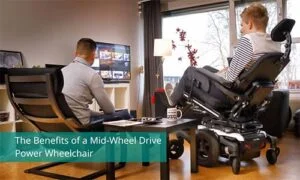Make sure you read Part 1 of “How do you know if your Client Could Benefit from Using a Power Wheelchair?“.
What kind of Power Wheelchair Would Benefit your Client the Most?
First, you need to ask “How far does the client need to travel every day?” In this situation it will be useful to look at two case studies:
Case Study 1: Jenny is a housewife. She needs to go to her local supermarket and she likes to visit her parents, friends and neighbours in her neighbourhood. Her daily travel range is around 20 km. In this case we would recommend Jenny to use an indoor/outdoor electric wheelchair.
Case Study 2: Tony works downtown and sometimes goes out of office to meet clients or hang out with his colleagues. His daily travel is around 30 km, more than Jenny. In this case we would recommend that Tony uses an outdoor/indoor power wheelchair however the client can opt for an outdoor electric wheelchair that would be more beneficial if the infrastructure and environment was not wheelchair friendly.

Source: Karma Medical YouTube: Morgan Power Wheelchair
Secondly you need to ask “How important is the adjustability of the chair to the client?” We understand that our clients have different body types, for example, some are taller or heavier, however all users need the right positioning support to assist them sitting up straight and stably.
- Captain Seat: The Captain Seat is comfortable but lacks seat dimension options and seating accessories. The Captain Seat is suitable for users with good trunk control like the elderly.
- Sling Seat: The Sling Seat has more seat dimension options and the possibility to add on after-market cushions and backrest for extra postural support.
- Rehab Seat: The Rehab Seat is highly adjustable and has the full power positioning functions to change the users posture. This type of seat is highly recommended for growing children or those with a progressive disease.

Source: Karma Medical YouTube: Blazer Series Power Wheelchair
Lastly, you need to ask “What kind of seat positioning changes does the client need?” The most common power seating functions we see in power wheelchairs is the power tilt, power recline and power stand.
- Power Tilt: Power Tilt transfers the users weight and COM (Centre of Mass) from the hips to the back which is recommended to those who cannot reposition themselves to relieve sitting pressure or easily slide out of the chair.
- Power Recline: The Power Recline opens the sit-to-back angle and enables the user to lie down in the wheelchair. This is a great feature for those who need to take a break from sitting up straight or for attendants to carry out personal and hygienic care.
- Power Stand: The Power Stand can lift up the user to a certain height into the standing position. This has several health benefits and improves functional reach and social interaction.
As you can see, many types of clients can benefit from using an electric powered wheelchair even if it is not obvious at first. Is it important not to let the user settle for a manual wheelchair if you feel that they would benefit from a power wheelchair.
Keep Reading

 Global
Global